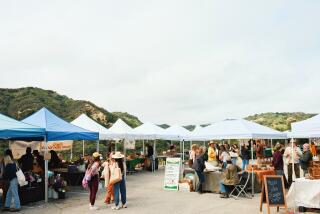Santa Monica Farmers Market serves up ‘a little piece of normalcy’ in bizarre times
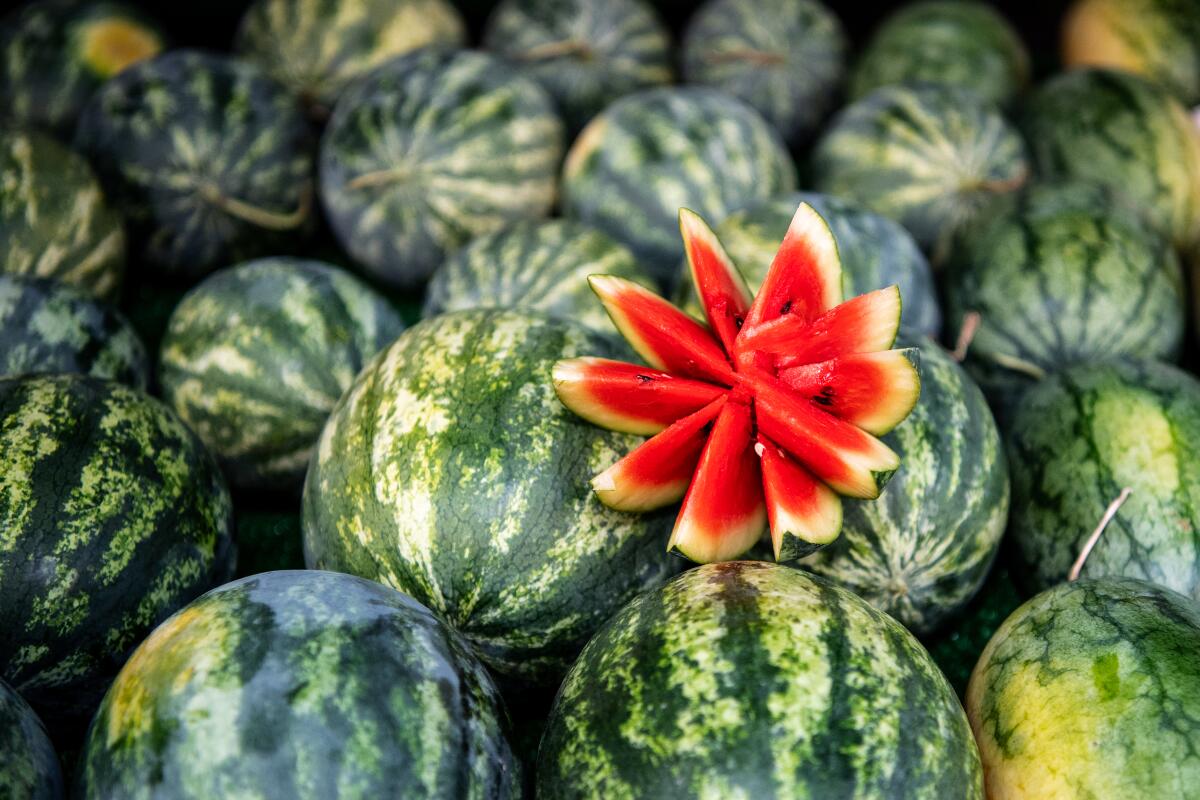
Chef Tristan Aitchison has shopped at the Santa Monica Farmers Market for nearly a decade. He still does so on Wednesday mornings, but he’s now buying less because his restaurant serves only takeout and has been forced to lay off workers during the COVID-19 pandemic.
He especially misses lingering to chat with other chefs and buyers. “Now it’s more about business,” says Aitchison, chef de cuisine at Providence restaurant in Los Angeles. “Get in and get out.”
For almost 40 years, downtown Santa Monica has been transformed midweek into a mecca for food lovers, creative cooks and A-list restaurant chefs. Farmers drive from as far away as Gilroy in Northern California to offer giant strawberries, deep green kale, broccolini, yellow and purple onions, jicama, passion fruit, sunflowers, dates and so much more in open-air stalls along Arizona Avenue and 2nd Street.
The Santa Monica Farmers Market is one of the nation’s premier grower-only operations, the grandfather of the four weekly markets run by the city and an inspiration for markets across the country. There are no tamales, coffee or kettle corn sold here. You’ll find only produce grown in the fields and orchards of the Golden State.
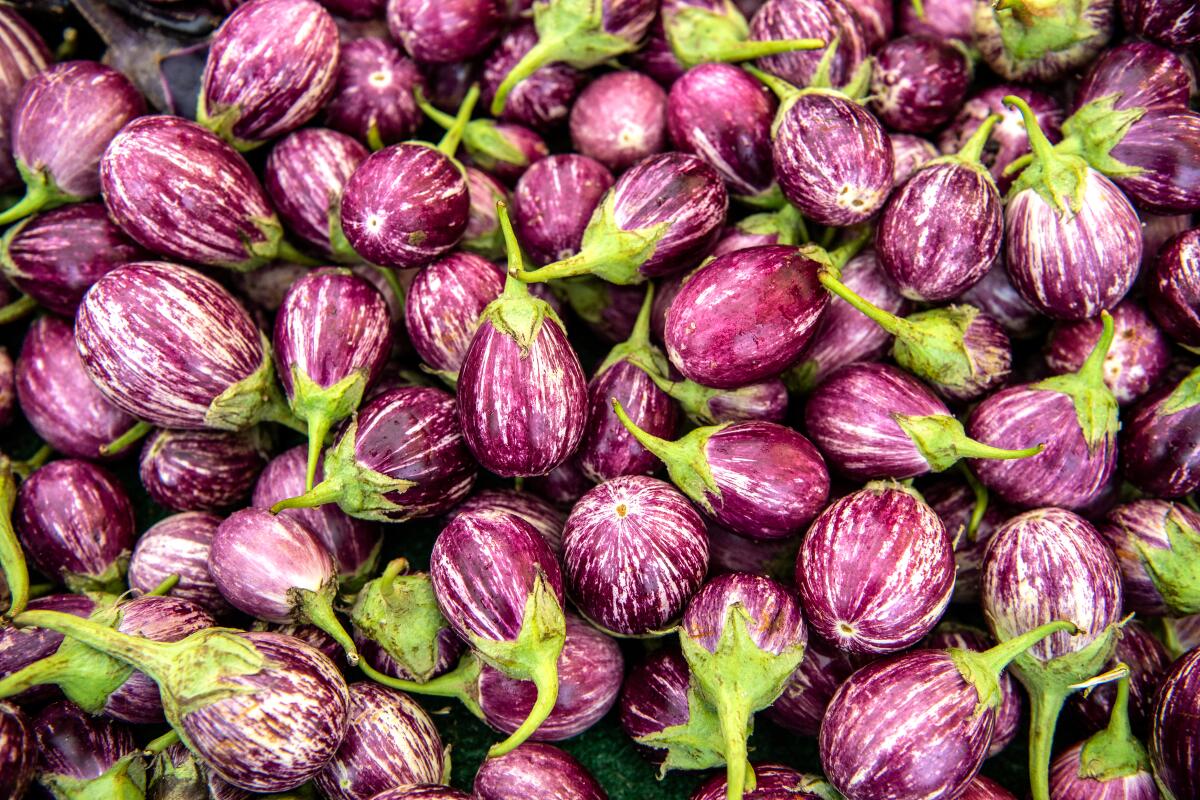
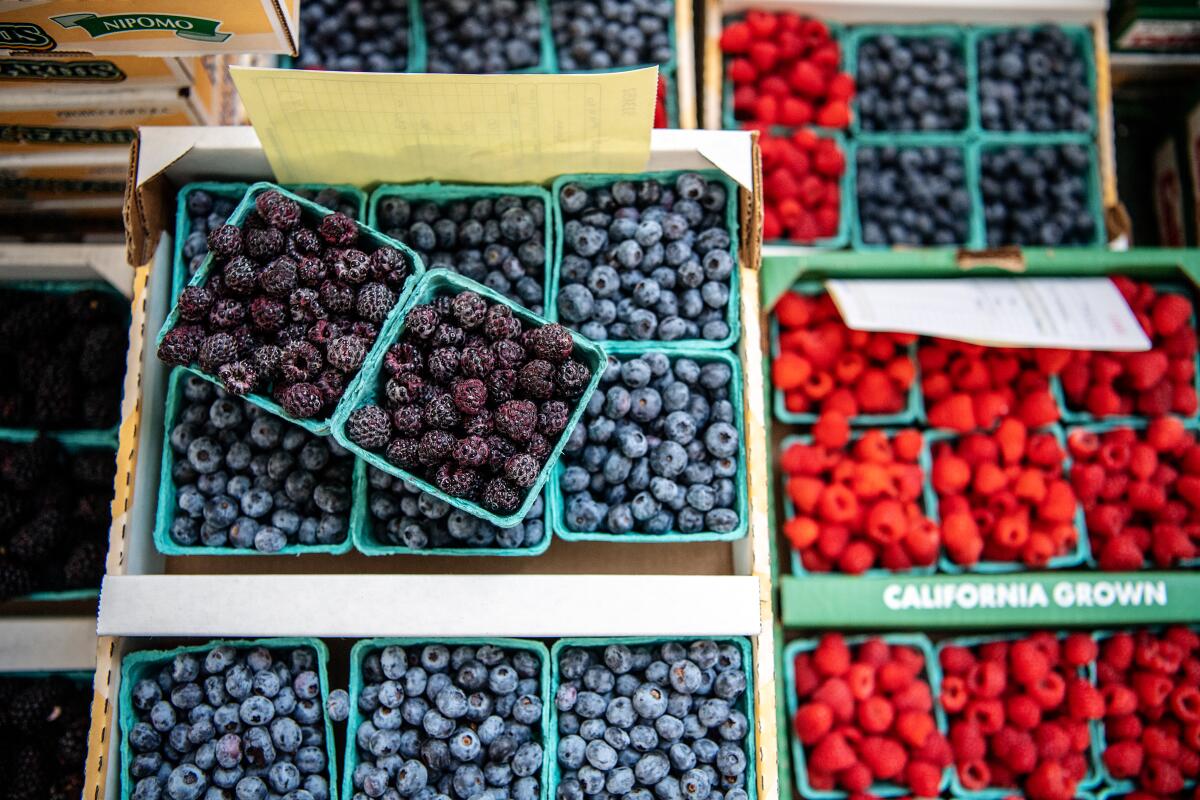
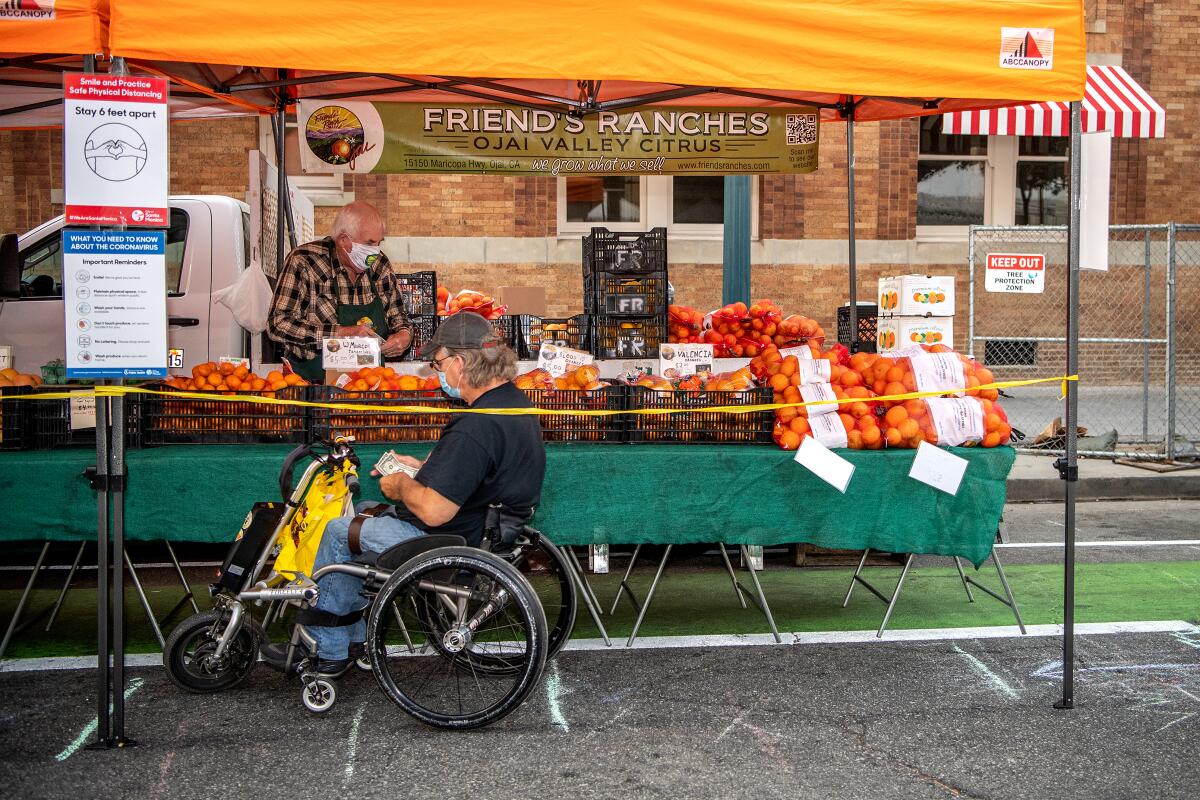
Now, shoppers also find fewer farmers, more lines and a host of new rules.
For market manager Jaclyn Rivera-Krouse, the biggest challenge has been “quickly shifting from the concept of a farmers market being so wide open to creating a system that has limited entry and exit points and then communicating that to the public.”
The changes mean customers now wait in long lines at designated entrances and find more lines inside at stands. Everyone must wear masks and try to stay six feet from others. Yellow caution tape stretches across displays. Farmers supply hand sanitizer. Some allow shoppers to touch the produce; others don’t. Vendors wear gloves if they handle both cash and produce. Handwashing stations have appeared. Sampling is a thing of the past, as are tours and school groups.
Yet more than ever, Rivera-Krouse and others observe, people savor the chance to shop outdoors and to be reminded that nature, after all, isn’t on lockdown.
The market remains a key part of the lives of vendors and customers like Mark Freund, who gets in line an hour before the 8 a.m. opening. For him, the waiting has become “a kind of meditative time.” With less socializing inside, Freund says a camaraderie has developed in the line. And he likes that the market is less crowded now.
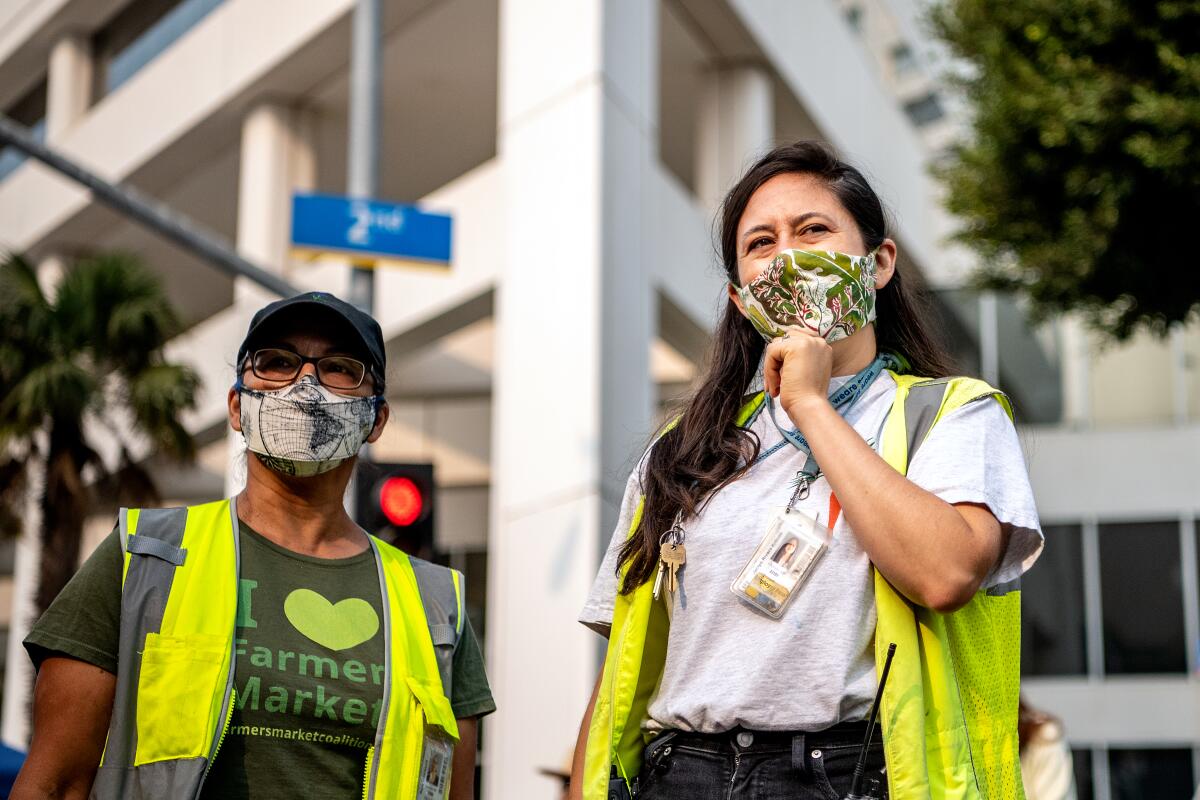
Some sellers, including Coleman Family Farms owner Romeo Coleman, report a drop of 25% to 30% or more in sales to restaurant buyers. Among those who remain are the Rustic Canyon Group, Akasha, Jon & Vinny’s, Gjelina and Suzanne Goin’s group.
Coleman drives from Carpinteria each week; his farm has been part of the market since the 1980s. One of his regular customers is Aitchison, the Providence chef who says he now preorders in smaller quantities from favorite farmers. That cuts down the time he spends at each stand. “The farmers have taken as much of a hit as we have,” Aitchison says. “We buy less, so they plant less. The effect trickles down.”
In recent months, the number of farmers in the market has dropped too, from around 75 to 80 to fewer than 60 some weeks. Rivera-Krouse says some left in fear of exposure to COVID-19, while others responded to what she calls the “natural gamble of farming,” the seasonal ups and downs.
Meanwhile, retail shoppers have decreased from about 10,000 a day to 2,000, although Rivera-Krouse notes that some buyers have combined their lists and send just one person to shop for several families.
Demand for some products has increased. Kiana Lowe, a manager at Milliken Family Farm in Santa Barbara, noticed an uptick in business early in the pandemic. People were stocking up for an uncertain future. “We sold out of anything that could be stored, like potatoes,” she says. “And we couldn’t grow enough garlic; we sold out every week. A lot had been coming from China and got scarce, so people bought from us.” Others sought the bulb as they looked for ways to boost immunity.
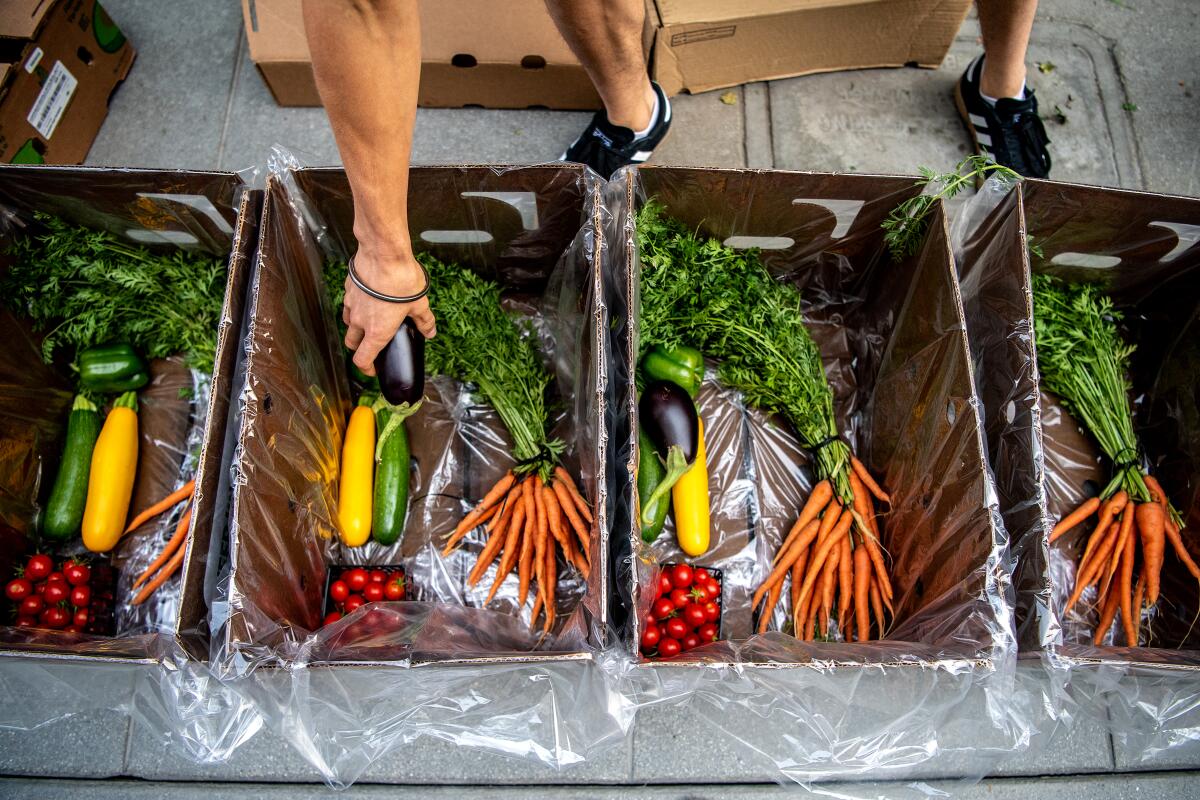
Rose Rennie, who runs the stand for Energy Bee Farm, a purveyor of raw and gourmet honey, also says the pandemic created more demand — at first. “People were cooking more and were interested in the nutritional benefits of raw honey.” But she estimates that her business dropped 30% over the summer.
The Santa Monica Farmers Market has been integral to the modern history of California. It was key to the state’s food revolution of the 1980s, built around local, seasonal produce and led by chefs such as Alice Waters and Evan Kleiman. In 2007, the market spawned “The Santa Monica Farmers Market Cookbook” by Amelia Saltsman.
For many vendors, the market is not only a big part of their livelihood but also what Rivera-Krouse calls “a little piece of normalcy in a very bizarre year.”
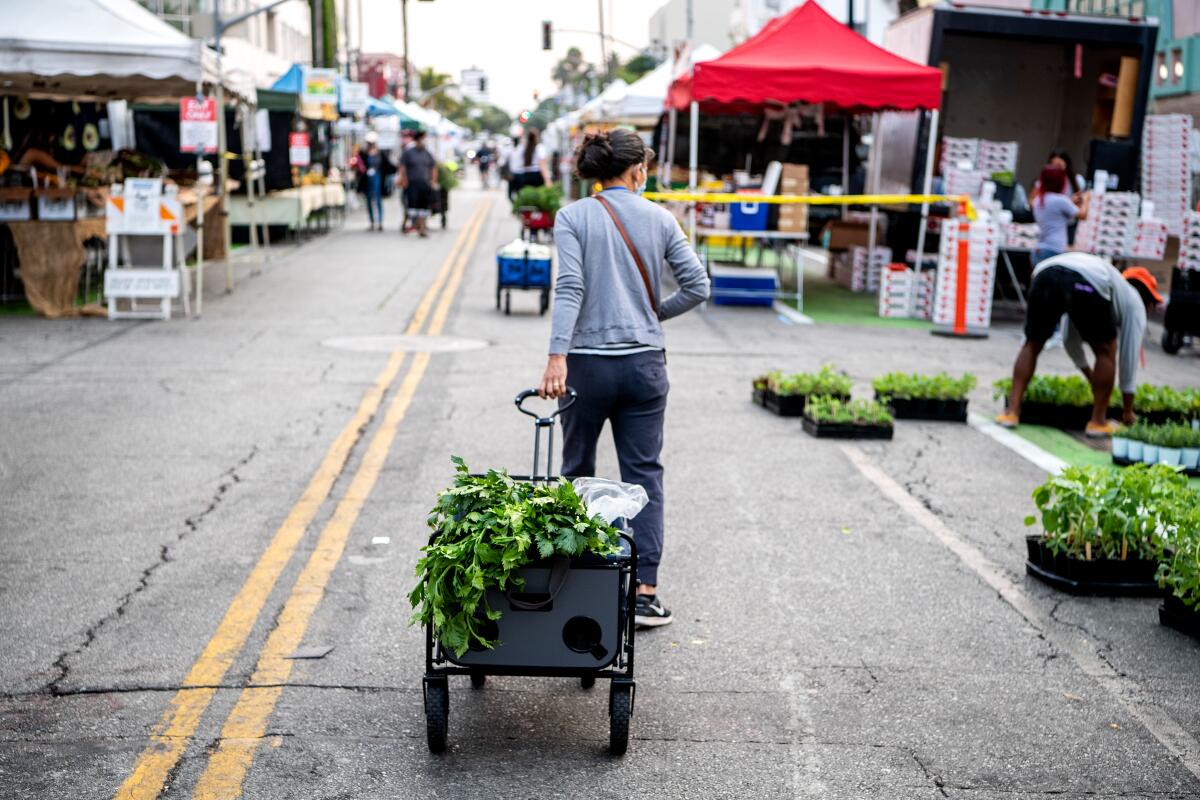
Coleman says 97% of shoppers follow the new regulations without complaint. He sells about 50 types of greens, including black “dino” kale, stinging nettle and Persian and chocolate mint. “We will bag for you,” his sign announces. Coleman says the market staff has made it possible for vendors like him to stay open and safe.
That hasn’t been easy, according to Rivera-Krouse, who had been manager for just over a year when the pandemic hit in March.
On market days, her workday starts at 5 a.m. She spends much of her time responding to radio calls from staff and volunteers about various issues: a shopper with no face covering; someone with a pet that is not a service animal; customers standing too close; an unannounced visit from the California Department of Food and Agriculture. Wearing a chartreuse green safety vest, she hurries to handle each situation before it escalates. She often fields complaints that market regulations are too strict — or not strict enough.
Rivera-Krouse says the pandemic has forced her to “drill down” on the basics of the market operation: connecting farmers who rise by 3 a.m. and drive hundreds of miles with buyers seeking something special, while keeping everyone safe in the process. “The farmers have been the backbone of our operation,” she says. “They’re the heroes in all of this.”
Neither the market staff nor the farmers know what to expect as the holidays approach. “People will still have to eat,” Coleman says, “and hopefully, they can gather with their families.” Regarding the potential effect on the market, he says: “I hope it will be big.”
More to Read
Eat your way across L.A.
Get our weekly Tasting Notes newsletter for reviews, news and more.
You may occasionally receive promotional content from the Los Angeles Times.
